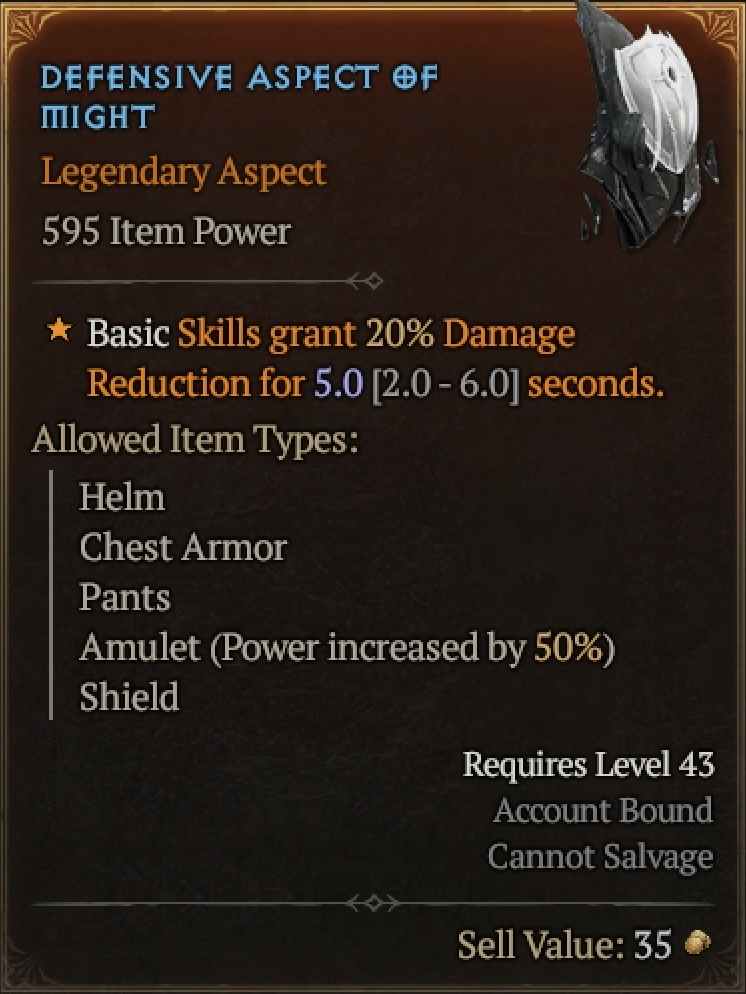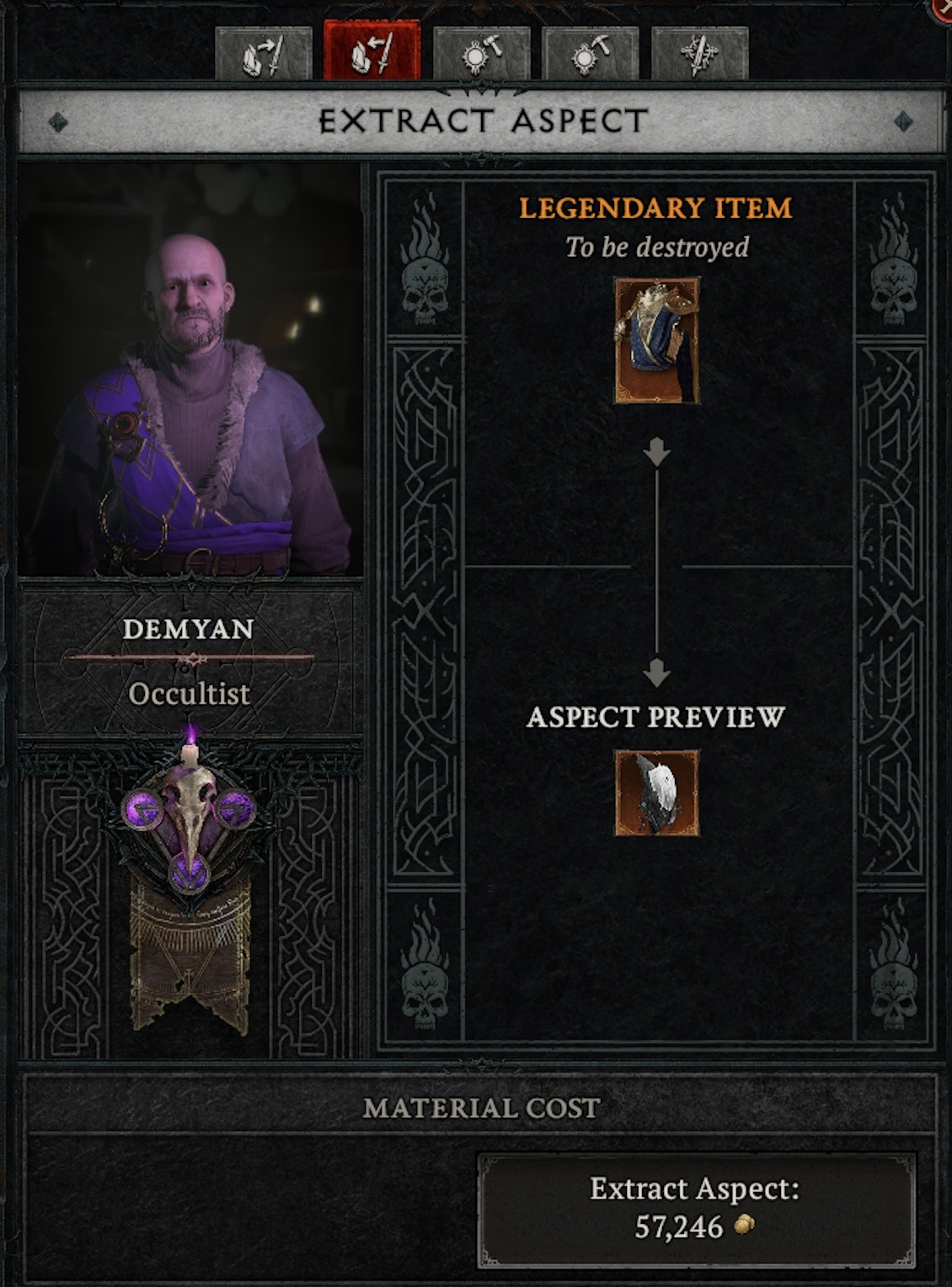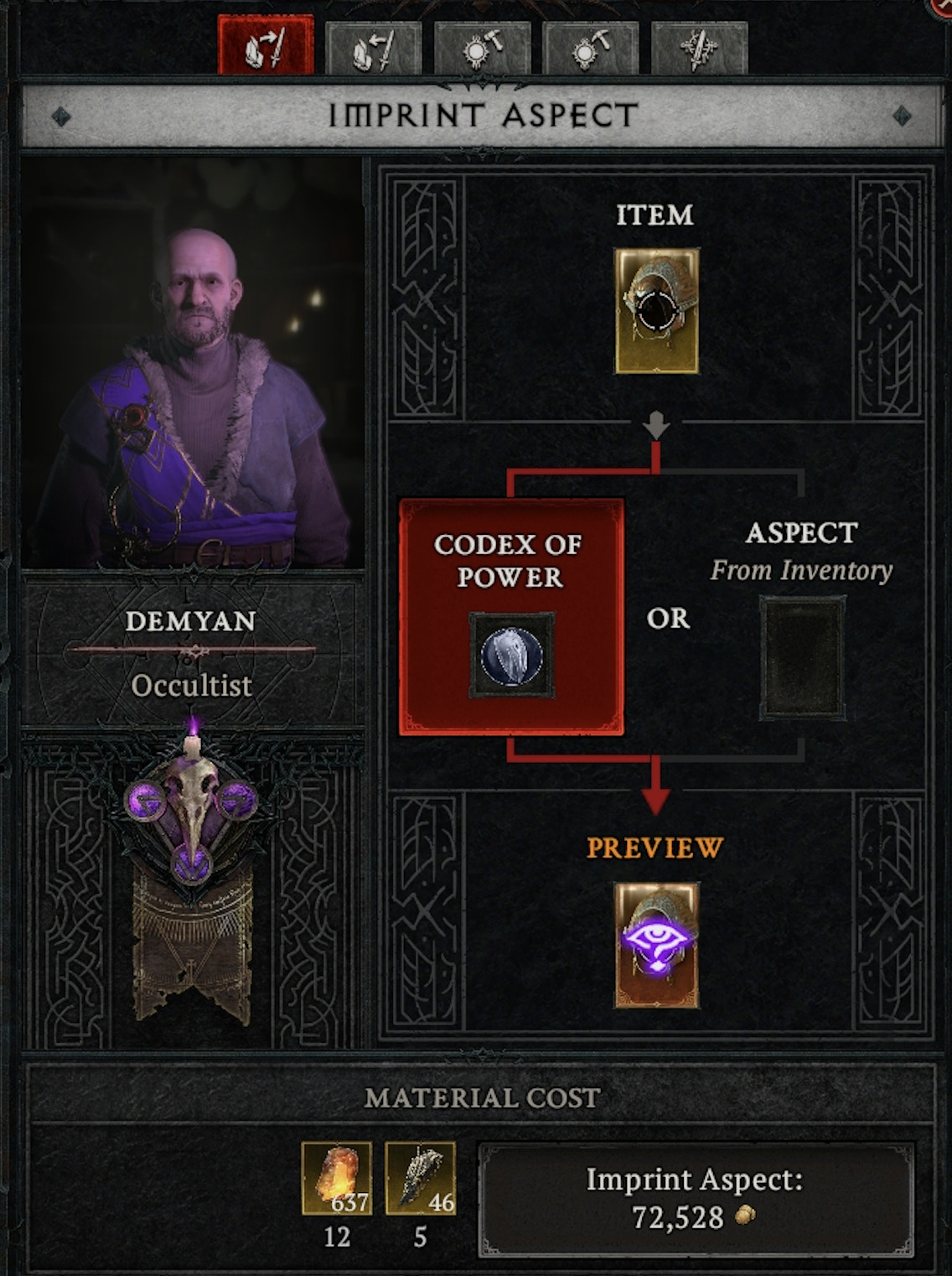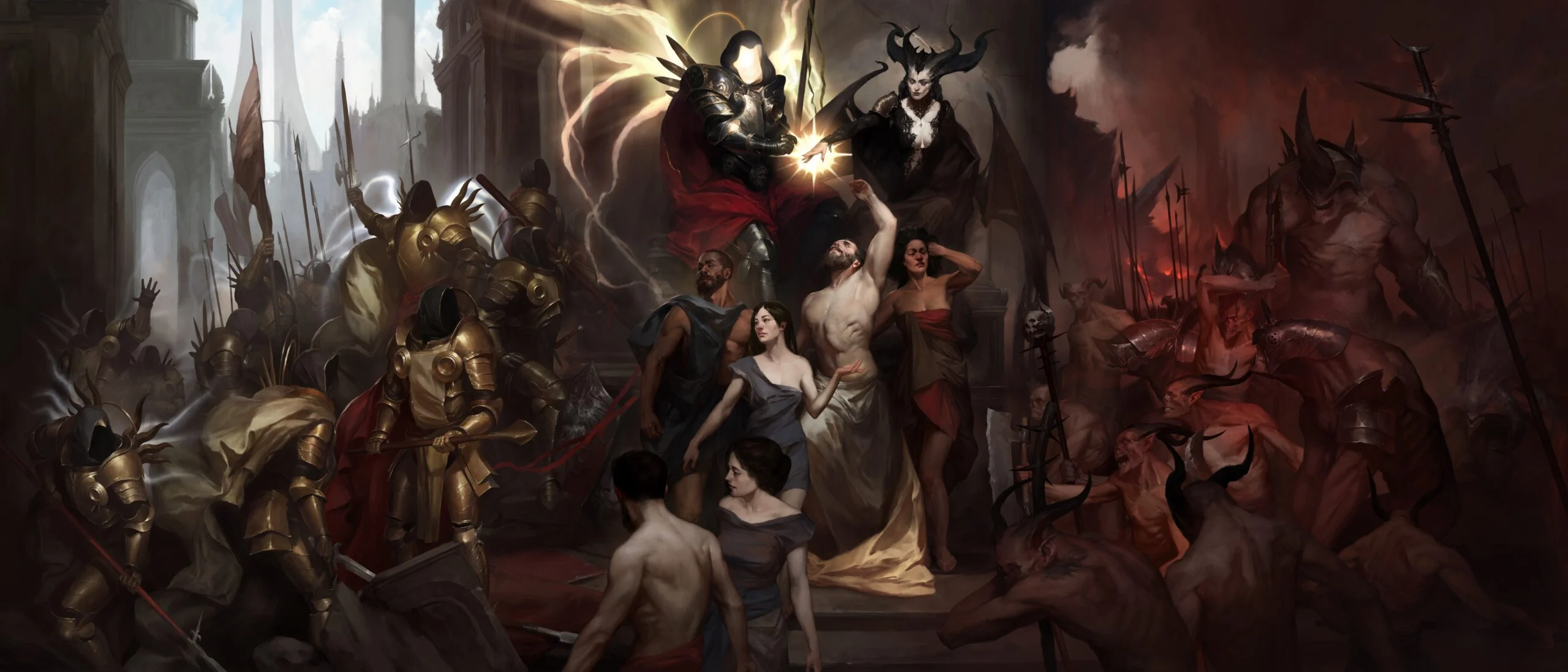Legendary Aspects are a core part of Diablo 4’s character-building process, and you will see them recommended in any build you find on the Internet. In this guide, we will go over exactly what Legendary Aspects are, how they can obtain, and how they interact with the Codex of Power.
Most importantly, you will learn why you should care about them and how to best work the system to your advantage while minimizing waste.
What are Legendary Aspects?
Legendary Aspects (or Aspects, as we will refer to them throughout the rest of this guide) are special powers that exist on Legendary Items in Diablo 4. These are usually more peculiar effects that add new interactions between skills of the class to which they belong, make certain skills better or different, or just add new mechanics to your character.
There are 5 different categories of Aspects (Offensive, Defensive, Resource, Utility, and Mobility), and each category of Aspect can only be applied to a certain number of gear slots, as follows.
- Offensive: 1-Handed Weapon, 2-Handed Weapon, Gloves, Amulet, Ring
- Defensive: Shield, Helm, Chest, Pants, Amulet
- Resource: Ring
- Utility: Shield, Helm, Chest, Amulet, Gloves, Boots
- Mobility: Amulet, Boots
When an Aspect exists on an Amulet, its base effect is increased by 50%, and when it exists on a 2-Handed Weapon, its effect is increased by 100%.
While Aspects can exist naturally on Legendary Items that you find in the game (and these items can be upgrades for your character, and therefore very usable as such), their main function in character-building is to obtain them and then imprint them onto Rare items of your choice (that is to say, with the stats you want for your build). We go into detail about this below.
Aspect Ranges and Rolls
Some Aspects, like the  Aspect of Perpetual Stomping, have a very straightforward effect that has no potential for variation, as we can see in its tooltip text. The Aspect will always be the same no matter what. That said, most Aspects have one or more elements that have a variable component. An example of this is
Aspect of Perpetual Stomping, have a very straightforward effect that has no potential for variation, as we can see in its tooltip text. The Aspect will always be the same no matter what. That said, most Aspects have one or more elements that have a variable component. An example of this is  Aspect of Might. This will have a random number (between 2.0 and 6.0 seconds) for the duration of Damage reduction granted by Basic skills.
Aspect of Might. This will have a random number (between 2.0 and 6.0 seconds) for the duration of Damage reduction granted by Basic skills.
We call the intervals in which can exist ranges, and we call the precise number on a given Aspect a roll within that range.
How to Get Aspects
There are two sources for Aspects in Diablo 4. One is dungeons, and the other is Legendary Item drops in the world of the game.
Most of the Aspect that exists in the game can be obtained by completing one of the many dungeons. When you hover over a dungeon’s entrance on the map, it will tell you what the Aspect you get as a reward for completing that dungeon is. Once the dungeon is complete, the Aspect will automatically be added to your Codex of Power (see below for more on this topic). From here, it can be imprinted onto a Rare item of your choice, giving that item the Aspect and turning it into a Legendary.
All of these Aspects, as well as a few additional ones also occur naturally on Legendary Items that drop from monsters, chests, caches, and so on. These Aspects can be simply used with the item on which they dropped, or they can be extracted from the item at the Occultist, and then imprinted onto Rare items of your choice.
Our build guides will always provide you with the source of the recommended Aspect, be it a dungeon or exclusively a drop.
The Codex of Power
The Codex of Power is essentially an account-wide repository of Aspects. The Aspects here are collected from completing dungeons, as stated above. Assuming you have the relevant area of the world map explored, clicking an Aspect that you do not have in your Codex of Power will highlight its dungeon on the map for you.
Aspects in the Codex of Power always have minimum roll possible with the Aspect’s range(s). This means that, in the case of  Conceited Aspect, in the Codex of Power version of this Aspect, the damage increase will be 15%. This is relevant, because that is precisely the Aspect that will end up on your item when you imprint it, which means it will be potentially weaker than a better-rolled Aspect that comes from a Legendary Item drop.
Conceited Aspect, in the Codex of Power version of this Aspect, the damage increase will be 15%. This is relevant, because that is precisely the Aspect that will end up on your item when you imprint it, which means it will be potentially weaker than a better-rolled Aspect that comes from a Legendary Item drop.
The Codex of Power does not contain every single Aspect that exists in the game, which means that some builds will rely on finding rarer Aspects through Legendary Item drops alone.
Aspects from Legendary Items
As stated above, Aspects can and do also exist naturally on Legendary Items that drop in the game. These random drop Legendary Items can contain all of the Aspects that exist in the Codex of Power, as well as a few Aspects that do not, and which can only be found on Legendary Item drops.
The Occultist can, for a price, extract the Aspect from such an item. This results in a single-use consumable item that is by default placed into the Aspects tab of your Inventory. This extracted Aspect retains the exact roll(s) it had on the Legendary Item from which you obtained it, and when imprinted onto a Rare item, it will retain those rolls.

To re-state and clarify, Aspects you extract and imprint are single-use, which means that if you wish to imprint that Aspect again onto a different item (such as a later upgrade for the same slot), you will have to extract it anew from a different Legendary Item that has it, and then use that to imprint onto your new item. An imprinted item cannot have its Aspect extracted, so you cannot cycle the same instance of an Aspect between upgrades on the same slot, for example, and you must find a new Legendary Item from which to extract it.
This differs markedly from the Aspects in the Codex of Power, which are not consumed when imprinted (but which always have the minimum roll to compensate).
Extracting and Imprinting Aspects
Extracting Aspects
Extracting Aspects can only be done on Legendary Items that drop in the world, as explained in the previous paragraph. To do so, simply take the item you wish to extract the Aspect from to the Occultist, go to the relevant tab in the interface, and, if you are willing to pay the Gold price required, pay to have its Aspect extracted.

The resulting Aspect consumable item that goes into your inventory will show the Aspect’s description, complete with its rolls in the various ranges it may have, as well as with the item power of the item from which it was extracted.
While it was previously believed that lower item power Aspects cannot be imprinted onto higher item power Rare items, this does not appear to be the case. Even Aspects extracted from regular items (from World Tiers 1 or 2) can be imprinted upon Sacred (World Tier 3) or Ancestral (World Tier 4) items, without restrictions.
That said, lower item power Aspects cost considerably less to extract and imprint, with no downside, so keep this in mind.
Imprinting Aspects
Imprinting Aspects to Rare items, whether from the Codex of Power or from an extracted Aspect, is done almost identically. Both operations are handled by the Occultist, both require you to place the item you wish to imprint the Aspect upon into the correct slot on the Occultist interface, and then you must simply choose whether you want to imprint an Aspect from the Codex of Power or from an Aspect in your inventory.

In addition to the gold cost, there is also a cost of crafting materials associated with imprinting the Aspect onto your item of choice. The material cost is the same regardless of whether you are imprinting an Aspect from the Codex or from an extracted Aspect, while the gold cost differs (and is typically lower when imprinting from the Codex of Power).
Recommended Aspect Management Strategy
While the purpose of this guide is mainly to explain the system and how it works, we can also offer some suggestions as to how you should go about managing your Aspects while leveling a new character, and while progressing in the endgame.
As you start off with your build, you should head to the Aspect section of the page and take note of the Aspect or Aspects that benefit your build. For leveling builds, the Aspects are never mandatory, but you should still aim to get them because they can offer nice boosts of power to help you along.
Once you have identified the Aspect or Aspects you care about, you should make it a relatively high priority to unlock these Aspects by completing their respective dungeons in the world. This will allow you to imprint them onto items and help you along your leveling journey. Keep an eye out for any drop-only Aspects that your build needs when you check out the Legendary Item drops you find, although most of our leveling builds simply recommend Aspects you can get through completing dungeons.
While leveling, it is a good idea to imprint your most important Aspect onto a Ring, because this can let you hold onto it longer without having to spend gold and materials to re-imprint it again when you want to replace your Ring (because you have two Rings, and you can replace the non-imprinted one first).
As you loot more and more items in the world, we recommend saving all the Legendary Items with relevant or interesting Aspects in your stash. If you know you intend to play a single endgame build, the process is rather simple, because you only need to worry about 10 or so Aspects to collect, and the other Legendary Items can be Salvaged at the Blacksmith instead (this rewards you with very valuable crafting materials, and is always the superior choice to selling the items for gold, in the case of Legendaries).
There is no benefit to pre-extracting the Aspects from the Legendary Items you are hoarding, since whether extracted or not, the item/Aspect will still take up the same amount of space in your stash. When you need to use an Aspect from one of the Legendary Items you have saved, go to the Occultist and extract it.
If you have multiple items with the same Aspect, evaluate the rolls of these Aspects. Ideally, you will extract (and then imprint onto the Rare item of your choice) the highest-rolled version of the Aspect that you have, since this will make you more powerful. That said, early on when you are low on gold, you may want to consider extracting and imprinting the lowest item power Legendary Item with the respective Aspect, since that will cost the least.







